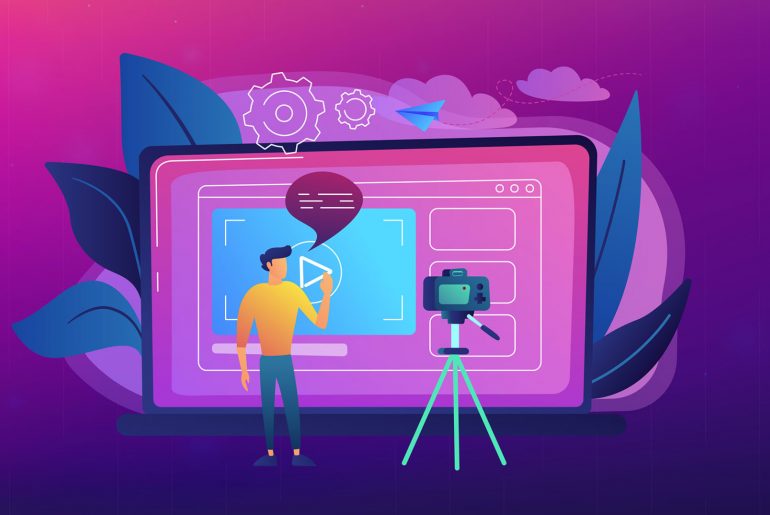These strategies will help you win and position yourself and your company in the best way this year.
A marketing strategy is the “plan identifying what marketing goals and objectives will be pursued to sell a particular product or product line and how these objectives will be achieved in the time available.” Keep in mind that you need to consider the following three pillars in your marketing strategy plan before execution:
- Core audience demographics
- Pricing and marketing budget
- Business goals
The following seven marketing strategies are vital for connecting with your target audience, achieving your marketing goals by promoting products and services, increasing brand awareness and engaging with your target audience through various channels.
1. Email marketing
Email marketing is an old concept that will be very relevant in 2023. Having lists of targeted audiences with a differentiated email structure for each can provide you with a great and “cheap” way to showcase the developments in your company and sell your products.
Here are three examples that you can implement in your email marketing. The first one is to increase your email interactivity. People are used to social media and the engagement they can give when reading or viewing content. Add videos, sliders, games and carousels of images that people can swipe.
The second one is the use of storytelling in your email copy. People are looking to connect to a brand’s values, and one of the best ways to do that is to tell your brand’s story. Tell them your origin story, show your personality, the company’s culture and team. Use videos, quotes and memes to build a relationship with your subscribers.
The last one is personalization. Personalization in the email body can improve your open rate by 13% and can increase the clickthrough rate by 28% while reducing the bounce rate by 18%.
Email is still thriving as you control how you approach your audience based on your marketing objectives without the need to comply with rules imposed by the platform you use.
2. Social media marketing
Social media marketing is here to stay, and we need to find the right platform for us to create content, connect with our audience and show our expertise or products. This will be dictated by your target demographics and where they spend the most time at.
It is also important to note that Business-to-Business (B2B) and Business-to-Consumer (B2C) companies will have specific platforms that can be used for their business model. For example, LinkedIn for B2B and TikTok for B2C. Remember that your audience can move to a different platform down the line.
One thing that you can integrate into your social media marketing strategy is to think of ways to incorporate user-generated content. This can be in the form of reviews, unboxing, tutorials, and product reviews. According to Stackla, 88% of consumers specify authenticity and relatability as crucial decision drivers to complete in-app purchases and increase their brand engagement.
The most important thing is to use your authentic voice and showcase the people in your company and their expertise, values and personalities.
3. Public relations (PR)
Another old-fashioned concept that still has a place in your marketing toolbox, especially in 2023. PR is relevant and can help you increase awareness around a milestone you’ve achieved or a product/ initiative you are launching. Media mentions will also help you with the SEO of your website/ brand name and how you rank in searches as you get authoritative websites mentioning your company.
According to Statista, the PR industry is expected to be worth $129 billion by 2025 or an increase of 68% from 2020, worth $88 billion.
4. SEO
Search engine optimization (SEO) is a must-do strategy in 2023. SEO aims to increase the searchability of your brand name and specific keywords relating to your offers while helping you grow traffic and sales.
Organic SEO can help you rank your content for specific keywords. I recommend learning how to do the basics of SEO in your content and focusing initially on long-tail keywords, as it will be easier for you to rank.
The main pillar in your SEO strategy should be creating high-quality content and targeting your customers’ needs and questions engagingly while targeting keyword phrases. Create evergreen content that will help customers understand your company and products better.
SEO can be integrated with paid ads so your articles can show on top of the search results.
5. Influencer marketing
Collaboration with influencers can help you scale your business in a short period by increasing your brand awareness and reputation. The key here is to research and get numerous quotes from different influencers so you can decide on the best deal.
I’d say that it’s not always beneficial to go for the biggest names in a particular niche, as your business might not be prepared for that growth. A better strategy will be to find smaller accounts with a more engaged audience so both parties can grow simultaneously and be more sustainable.
One growing trend in influencer marketing is live stream shopping, which means that potential customers can buy products through a live video. Influencers can showcase products, give opinions and answer questions from their followers about the product they are presenting. Instagram introduced Live Shopping in September 2022, which allows users to purchase products from Instagram Live directly, so expect this to be prioritized on the platform in 2023.
6. Virtual events
Virtual events are here to stay, especially after the last couple of years when travel was almost non-existent. Showing your expertise and value through online events can help you increase your brand awareness and reach. The list of attendees can be reused and segmented in your email communication, which will benefit your company in the long run.
Another strategy is to attract experts in the industry you are operating in and create an event where they talk about various subjects related to your company. The event videos can also be reused on social media in long and short-form videos.
7. Video marketing
The most important strategy in the last few years is video marketing. Closely related to hosting virtual events, video marketing can help you present your company from various perspectives.
People from your company can have topics they are working on and record video presentations for the world to see. Behind-the-scenes and company events can showcase the human side of your team, and the sky is the limit regarding creative ways to create video content.
Authenticity here is key as your willingness to open up in front of the camera so people can connect with who you are and what your company stands for.
Short vertical video content will be one of the biggest trends in video marketing in 2023. According to Zippia, 85% of U.S. adults own a smartphone as of 2022, and on average, Americans spend 5 hours and 24 minutes on their mobile devices daily. As vertical video content can take more real estate on a device and people are using TikTok, Instagram Reels and YouTube Shorts, you need to focus your time and creativity to investigate that type of video content.
The world is moving towards personal branding, and video is one, if not the best, way to open up to your audience.
Win with marketing in 2023
To summarise, test and see what works for you and your company. Do not focus and do all the strategies mentioned here simultaneously — experiment with what resonates with you as a personality and your business niche. Adapt and develop the best marketing mix for your desired outcome that will help you win in 2023.
By Kaloyan Gospodinov
Entrepreneur Leadership Network Contributor. CEO and Founder at Aezir. Kaloyan is an entrepreneur with global experience. Past successes include 1m+ app downloads, six figures from Amazon FBA, and managing a million-dollar crypto project. Currently, he advises Swiss biotech and runs a London marketing agency. His motivation is helping people pursue their dreams.
























